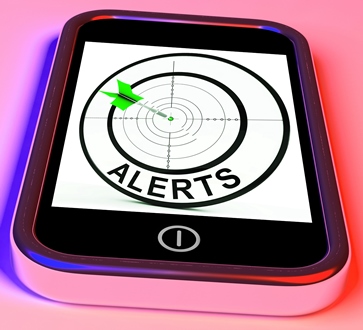E-Mobilizing Emergency Management
While most organizations have developed highly sophisticated, comprehensive emergency plans, they are often lacking the communication vehicle to meaningfully convey them and make them accessible to a wide audience before, during and after an event. Mobile devices provide a simple, efficient and secure channel to proactively get the most up-to-date plans and best practices into the right hands and mitigate overall risk.
- By Christopher Britton
- Apr 30, 2014
Today’s emergency, security, business continuity and risk managers have a lot on their plates as the overall workplace landscape has changed and communication is dramatically different than even a decade ago. Organizations – now more than ever – are charged with the “duty of care” responsibility to ensure employees, students, faculty, customers and visitors work and learn in a safe environment. They also must demonstrate a concerted effort to avoid and mitigate crises.
Companies throwing caution to the wind or pushing off proactive emergency management, safety precautions and overall risk decisions face increased legal liabilities, rising insurance costs and non-compliance penalties from government entities.
While organizations are rapidly adopting new technologies and utilizing the convenience and availability of mobile to streamline operations, increase operational and sales productivity, and even recruit new hires more efficiently, mobile is often underutilized in the emergency management world. This dynamic is surprising, as it has been reported that individuals check their mobile devices as often as every 10 minutes and the majority of the global workforce as well as college campuses now rely on smartphones to access pertinent information about their work, lives and education. Using these devices to communicate how to prepare for and respond to an emergency situation should be at the top of every organizations’ emergency preparedness list.
For security professionals, mobile can yield great advantages in proactively communicating safety best practices to the proper audiences as well as engaging in two-way communication to report on events and connect with those directly managing the response or rescue effort.
Moving Beyond Paper-based Plans and Traditional Emergency Alert Systems
Many commercial entities similar to university-based institutions are utilizing traditional emergency alert systems to communicate incidents. Unfortunately, most are fairly simplistic – issuing a basic message to a wide audience – and lack the functionality for more advanced preparation, in-the-moment communication and assistance after the fact.
Additionally, organizations and security administrators spend countless hours planning and revising emergency management plans and best practices for hundreds, if not thousands, of emergency scenarios; however the plans are stored in a file folder full of print-outs or on a server—only to be seen by a limited number of employees.
The rise of mobile technology has changed the landscape of communications for both the security professional as well as their constituents at large. Today, by publishing specific emergency plans through a secure mobile application, organizations can properly and proactively prepare personnel for best practices in the event of emergency situation and notify first responders with actionable plans to better support their efforts. As an example, if a truck driver for a chemical manufacturer carrying hazardous materials pulls into a gas station and an accidental spill occurs, the driver has the appropriate information on-hand via a mobile emergency management app to direct him through the proper procedures in mitigating issues and communicating the incident to the appropriate channels.
Smartphones Help Make Plans Accessible to Global and Diverse Audiences
Much of today’s business continuity technology that supports personnel in incident command centers and other locations has not educated, alerted and mobilized employees at large, which is an ongoing problem for global corporations.
Small, medium and large-scale organizations are now employing and working with diverse audiences on a more regular basis, creating further challenges. Employees worldwide encounter diverse cultural backgrounds and customs and potentially face language barriers. For emergency and security management professionals, ensuring safety procedures and best practices are communicated properly and uniformly to full-time, part-time or temporary staff is a complex and ever-evolving task. Do employees know where to go if there is an incident overseas? Separately, are U.S.-based emergency personnel able to properly communicate plans and procedures to employees across the globe? How do you communicate to many different groups with varying information while maintaining proper security protocol? Also, compliance with local laws can be extremely challenging.

Smartphones can help bridge the gap and provide a central resource for all employees to utilize during a crisis situation or even be used to document a less significant event after the fact. Mobilization of emergency and risk management, as well as business continuity, allows companies of any size to assess a situation by using mobile roll call and incident reporting capabilities that give employees the ability to communicate where they are, what they experienced and if they are OK when a situation an occurs. Those actions can then be compiled for compliance reporting purposes.
While most organizations have developed highly sophisticated, comprehensive emergency plans, they are often lacking the communication vehicle to meaningfully convey them and make them accessible to a wide audience before, during and after an event. Mobile devices provide a simple, efficient and secure channel to proactively get the most up-to-date plans and best practices into the right hands and mitigate overall risk.